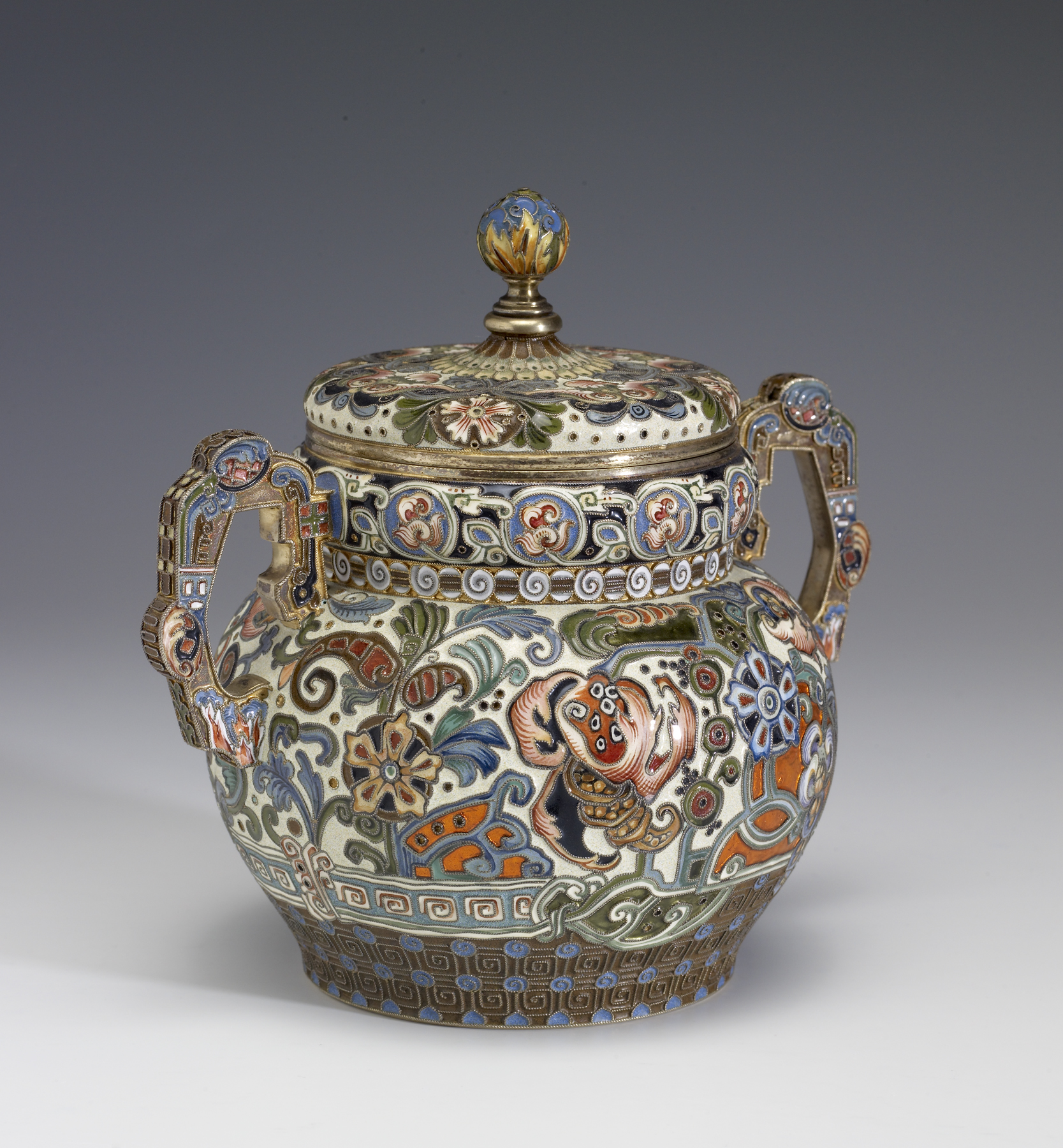Sugar Bowl
(18th and 19th Centuries )
Anne Odom cited this teapot and sugar bowl as pivotal examples of a transitional phase in Rückert's career in which he retained the large, lush Usolsk-type blossoms over a light ground, here with a greenish cast, but also introduced darker colors and black as well as an extensive use of foil-backed translucent enamels – in this instance, in orange and olive green. Overall, the blossoms and foliage have become more abstract and the geometric patterns more abundant. On both the teapot and the bowl, the lower portions are worked in filigree key patterns over a sober brown ground enlightened with blue circles. An unusual motif occurring on both the handles and the hinged lid's knob is the burst of flame.
The teapot is fitted with rings and squares of mother-of-pearl to insulate the handle and the lid.
The exuberant filigree enamel decoration on these two objects is similar, but not identical. This fact, together with the differences in hall marking, suggests that they were not created as a pair.
Inscription
Provenance
Provenance (from the French provenir, 'to come from/forth') is the chronology of the ownership, custody, or location of a historical object. Learn more about provenance at the Walters.
Sale, Russian Works of Art from the Collection of the Late Melvin Gutman, Parke-Bernet Galleries, New York, May 1, 1969, lot. 51; purchased by Jean M. Riddell, Washington, D.C.,1969; by bequest to Walters Art Museum, 2010.
Exhibitions
| 1987 | Old Russian Enamels. Virginia Museum of Fine Arts, Richmond. |
Geographies
Russia, Moscow (Place of Origin)
Measurements
H with Lid: 5 5/16 x W with Handles: 5 11/16 x D: 4 3/16 in. (13.5 x 14.4 x 10.7 cm)
Credit Line
Bequest of Mrs. Jean M. Riddell, 2010
Location in Museum
Not on view
Accession Number
In libraries, galleries, museums, and archives, an accession number is a unique identifier assigned to each object in the collection.
In libraries, galleries, museums, and archives, an accession number is a unique identifier assigned to each object in the collection.
44.877


